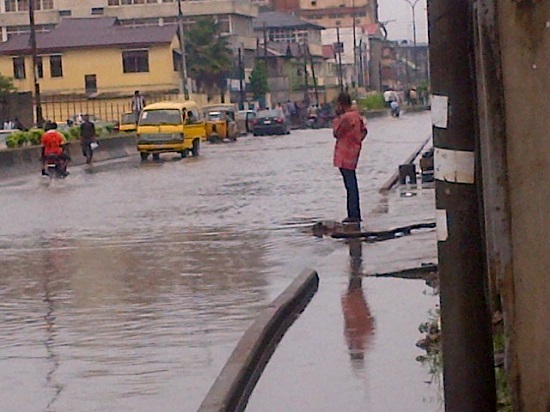BY GBENGA ONABANJO
The following areas would need interventions. They may not be exhaustive, but a conscious effort should be made to address them.
ROAD INFRASTRUCTURE
Proper policy to fund construction of roads should be put in place. Hitherto, the road tax was part of fuel price. This sum was dedicated to road construction. A sustainable infrastructural development scheme should be put in place by every state government. Standard designs and specifications for the various road categories must be established. These roads must have proper drainages and sidewalks. A road maintenance programme should be instituted.
Highway Corridors: Since Nigerians have the habit of encroaching and setting up markets along most highways, a highway monitoring and control unit should be set up to strictly enforce the non-encroachment of the corridors along our highways.
Road Signs: Adequate traffic and road signs should be placed on all our roads and strict enforcement should be maintained.
Advertisement
HOUSING SCHEMES AND RESIDENTIAL ESTATES
Most of the infrastructure in our housing schemes and residential estates need an upgrade. The concept of sites and services provision should be revisited. Also, an infrastructure reform should be established to mandate all developers to put in place first the services before any structure is erected. The infrastructural support fund should be extended to housing. This will help in sanitizing our residential neighbourhoods as most of them do not have infrastructure, thus becoming very huge slums shortly after they are occupied. The infrastructure should include water, gas, electricity, sewer, drainage, sidewalks, etc. A comparative cost analysis should be carried out between the underground infrastructure and the surface infrastructure.
DRAINAGES
Generally, the drainage infrastructure in Nigeria is sub-optimal. Whereas we are at par with developed countries in the areas of financial services technology and internet access provisions, we seem to be fixated on the open drain system which has been discarded at the turn of the 20th century for underground drain systems. The underground drain system, though more capital intensive, is more efficient and keeps the cities clean and does not take up space. The open drain or covered drains take up valuable space for sidewalks, they are dangerous, particularly during flooding, unhygienic, because they harbour all manner of debris and they largely contribute to the ugliness in most of our neighbourhoods and city centres. It will be a delight to take a giant leap and have an integrated drainage system to include storm water, as well as sewage and surface water. The technology to flush or suck blocked drainage pipes should be adopted for maintenance. This should be made compulsory for all new urban residential settlements as well as city centres. With this, our roads will be rid of filth associated with open drains.
SIDEWALKS
Legislation to ensure appropriately sized sidewalks to be part of our road architecture must be put in place, particularly on all roads in residential neighbourhoods and city centres. They must be finished with suitable materials that are stable, firm and slip-resistant. This will bring back the culture of walking and will improve social interactions among the citizens.
Advertisement
GREENFIELDS
Attention should be given to greening our environment, and provisions must be consciously made for large open spaces for communal gathering and recreation. These green spaces, quiet streets and recreation parks are important for relaxation, health and sports, nature watching and social activities. Open areas and green parks are important building blocks for promoting good quality of life in urban environments. Compulsory greenbelts for recreation and conservation should be gazetted by legislation making it impossible for its use to be reversed.
WASTE MANAGEMENT
The management and disposal of waste have been a major challenge for our cities and towns. A waste disposal hierarchy and protocol should be put in place, followed by the reduce, reuse, recycle and other forms of recovery such as energy from waste, and improved final disposal, followed by monitoring. The provision of landfills and recycling sites must be carefully considered.
METAL/CAR CRUSHERS
All abandoned vehicles on all our roads should be removed. Provisions should be made for metal crushers and iron smelters in various cities for the recycling of all the metal scraps obtained from abandoned and unserviceable vehicles.
STRENGTHENING THE PLANNING, APPROVAL, MONITORING AND ENFORCEMENT MINISTRY
The physical planning units in each city must be strengthened for monitoring, compliance and enforcement of all planning regulations. The specifications for provisions of green areas within residential developments must be enforced. Most physical planning units in the country lack the requisite manpower to monitor and enforce the planning laws. Every state must develop its own master plan, and this must be subject to review periodically.
DELIBERATE ATTEMPT TO BEAUTIFY
The government should have departments of parks and gardens in all cities saddled with the responsibility of deliberately beautifying the cities.
Advertisement
CITIZEN PARTICIPATION
Involving citizens in urban planning helps ensure sustainable economic development and plays a vital role in providing well-planned cities. Well-governed cities and towns that involve their citizens in environmental decision making will lead to better planning for the future and it will help to ensure the sustainability of the created system. There is a need for an Integrated Environmental Management System (IEMS). This helps to avoid conflict by considering the demands between the various policy areas and initiatives.
URBAN RENEWAL AND REGENERATION
Every state should have a vibrant department monitoring and controlling the trends in various settlements. These developments must be compared with the master plan of the areas. All blighted areas should be earmarked for constant upgrade.
Finally, a city is as beautiful as the soul of citizens engaged to plan it. In the early 1970s, two new highbrow settlements were conceived in two different countries in Africa. One was in Victoria Island, Lagos, Nigeria to serve as a buffer for the rapidly expanding commerce in Lagos Island. The other was in Sandton, Johannesburg in South Africa.
Advertisement
Today, Sandton comprises the corporate offices of virtually all top companies in South Africa. It is the financial district of South Africa. The Johannesburg Stock Exchange and three out of four major banks in South Africa have their headquarters located in Sandton. It is the most expensive neighbourhood per square metre south of the Sahara. It compares in terms of infrastructure, sophistication and beauty with the most beautiful cities in the world, whereas the Victoria Island extension in Lagos is blighted and does not command the value and respect it should. The blight arose due to the quality of planning and the infrastructure provided. The lack of enforcement and monitoring of building codes, coupled with inadequate maintenance, contributed largely to its decay. The same scenario is observed in most upscale neighbourhoods in the state. Lagos, being the city of excellence, needs to provide leadership for other states in the country to follow.
Here’s hoping that henceforth we will make conscious efforts to make our cities clean, healthy, beautiful and liveable.
Advertisement
Onabanjo is the founder of GO-FORTE FOUNDATION, an organisation dedicated to the restoration of the environment.
Advertisement
Views expressed by contributors are strictly personal and not of TheCable.
Add a comment






